



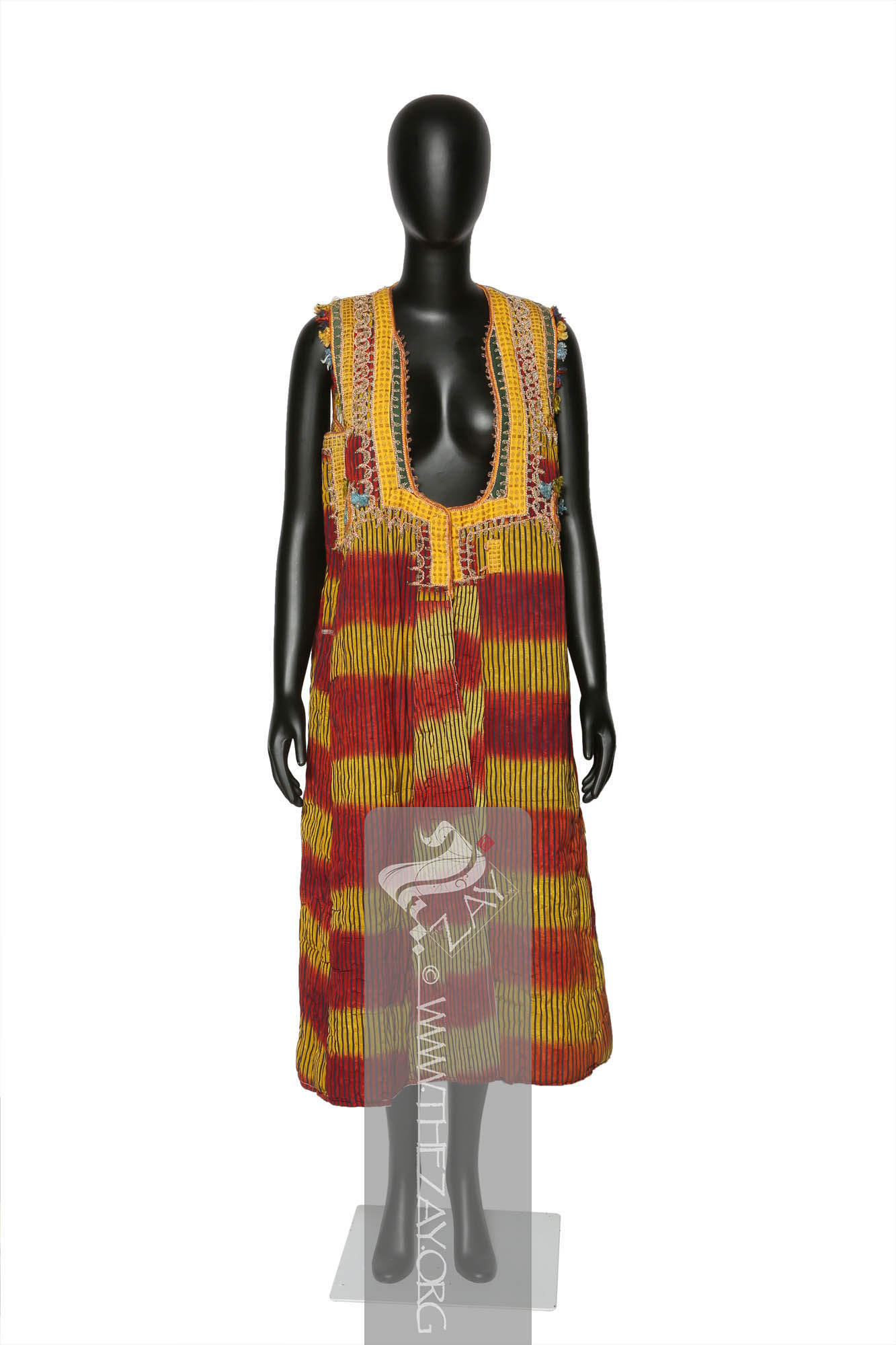
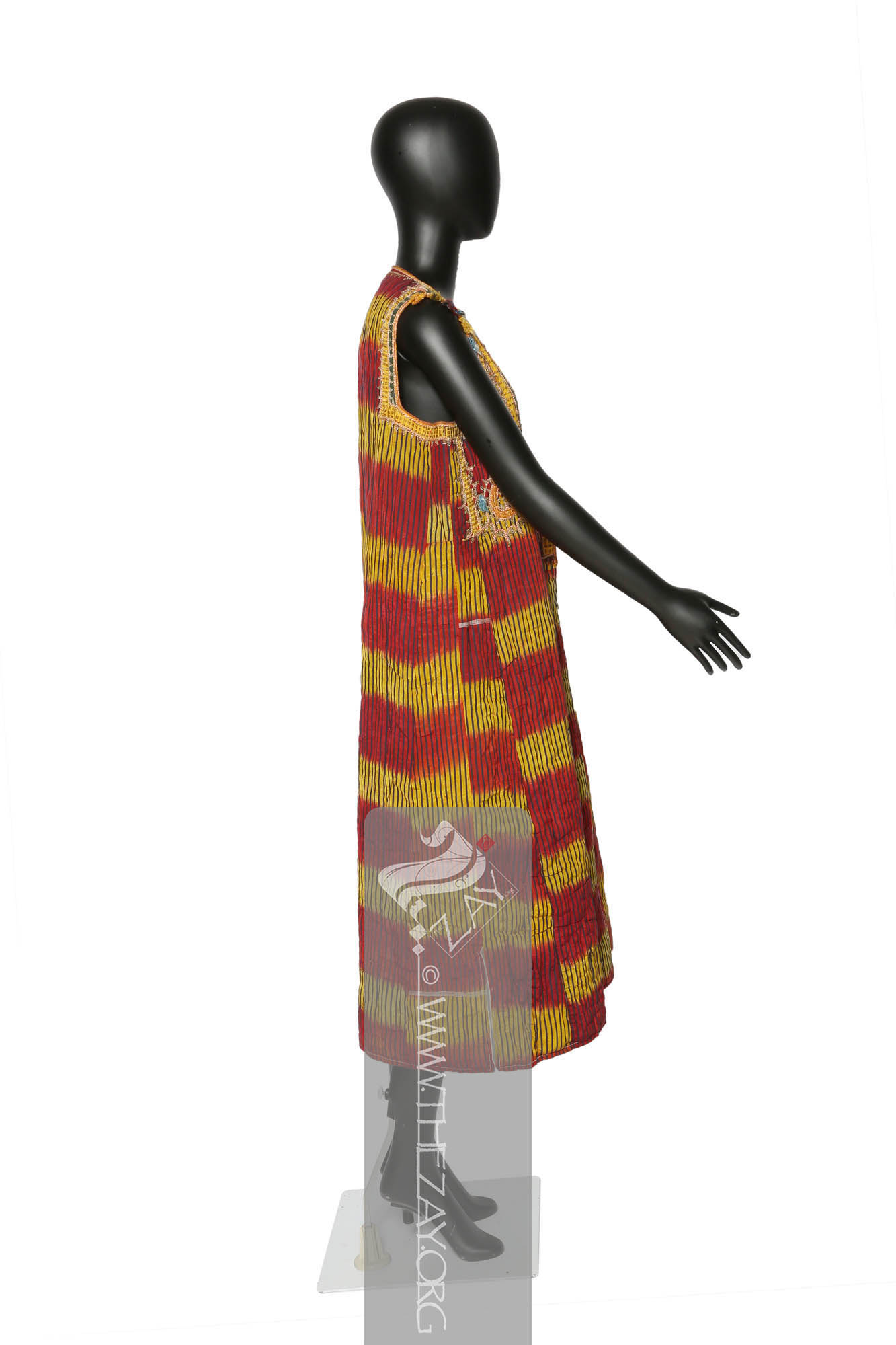
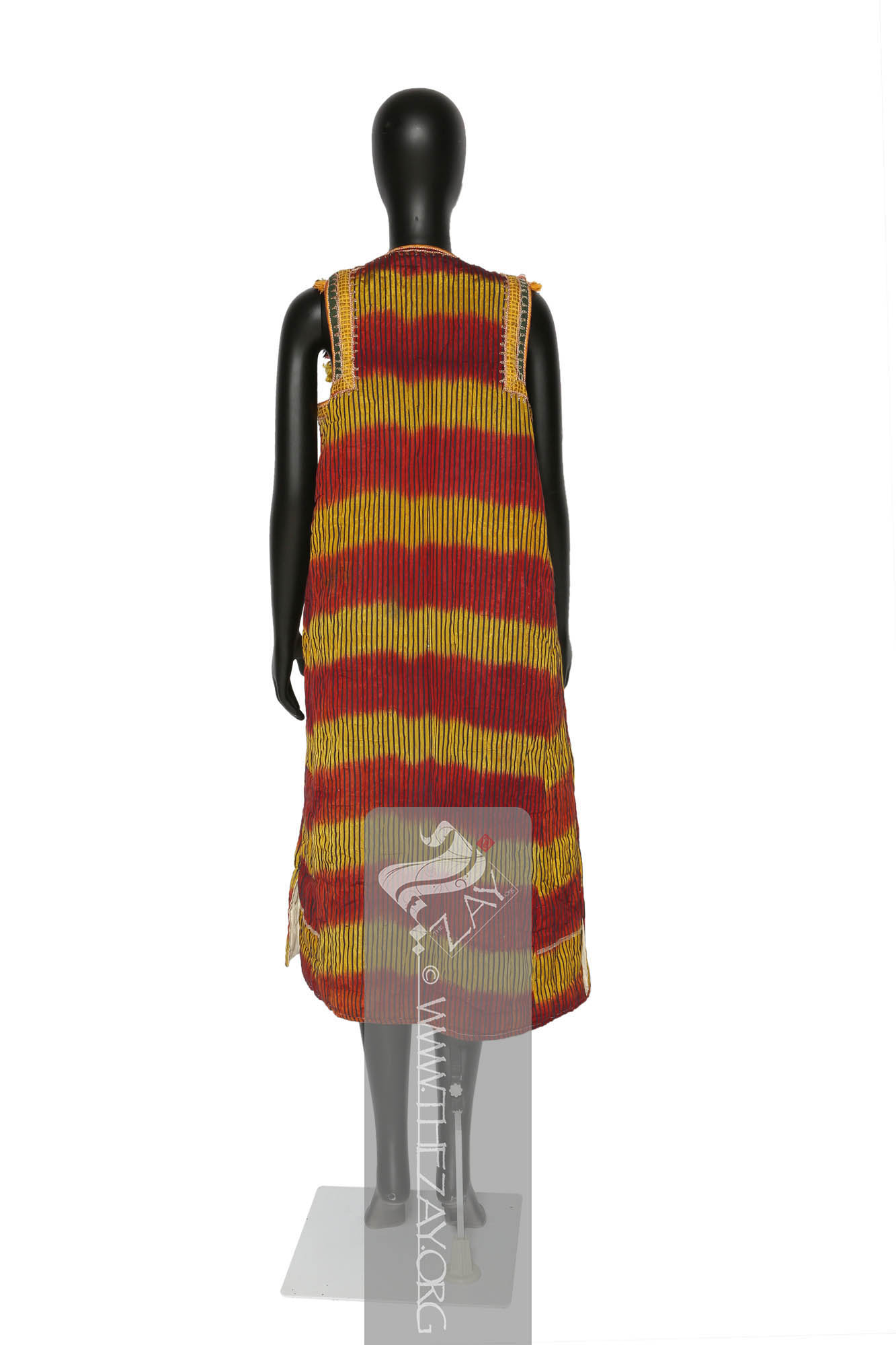
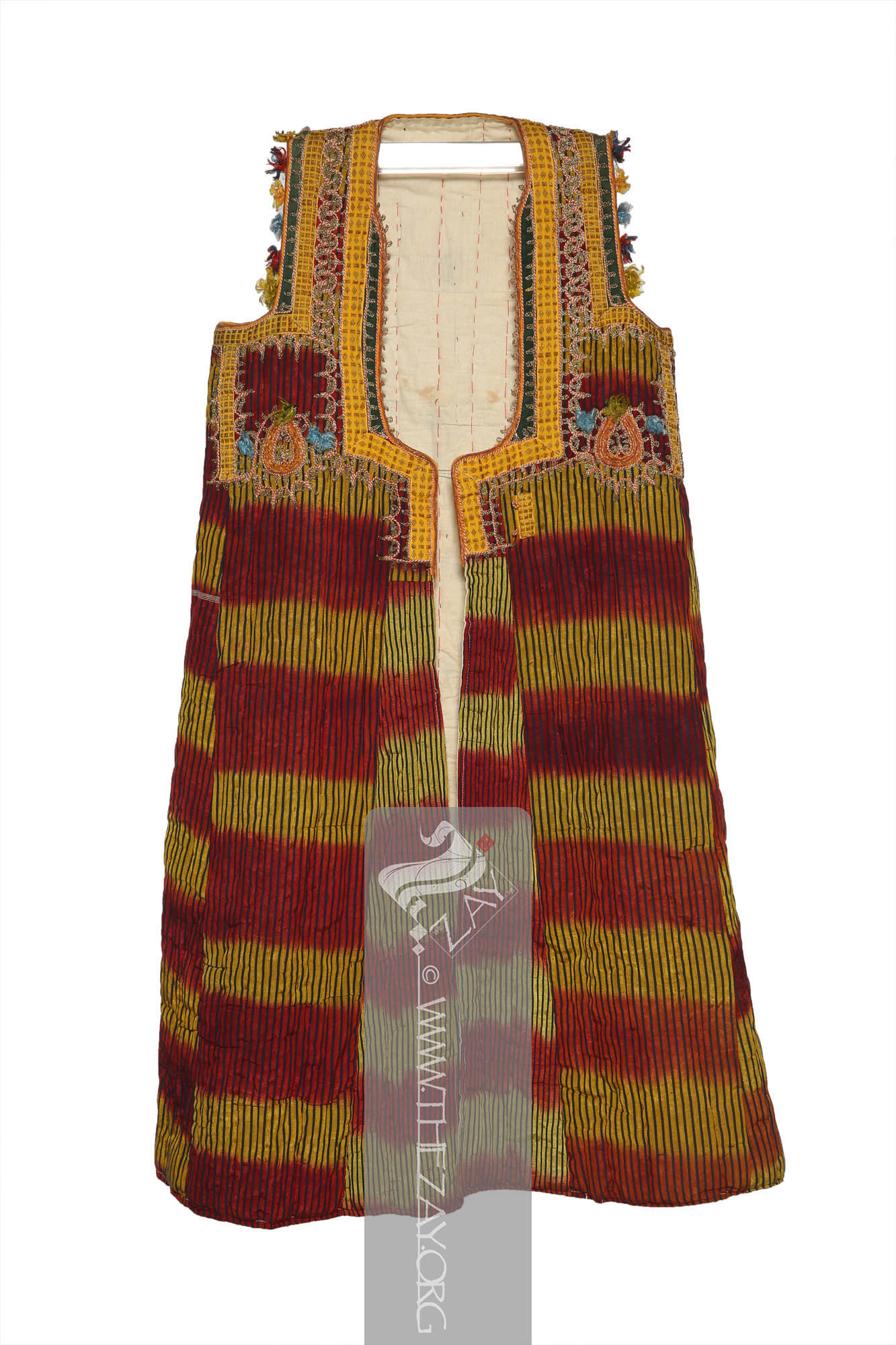

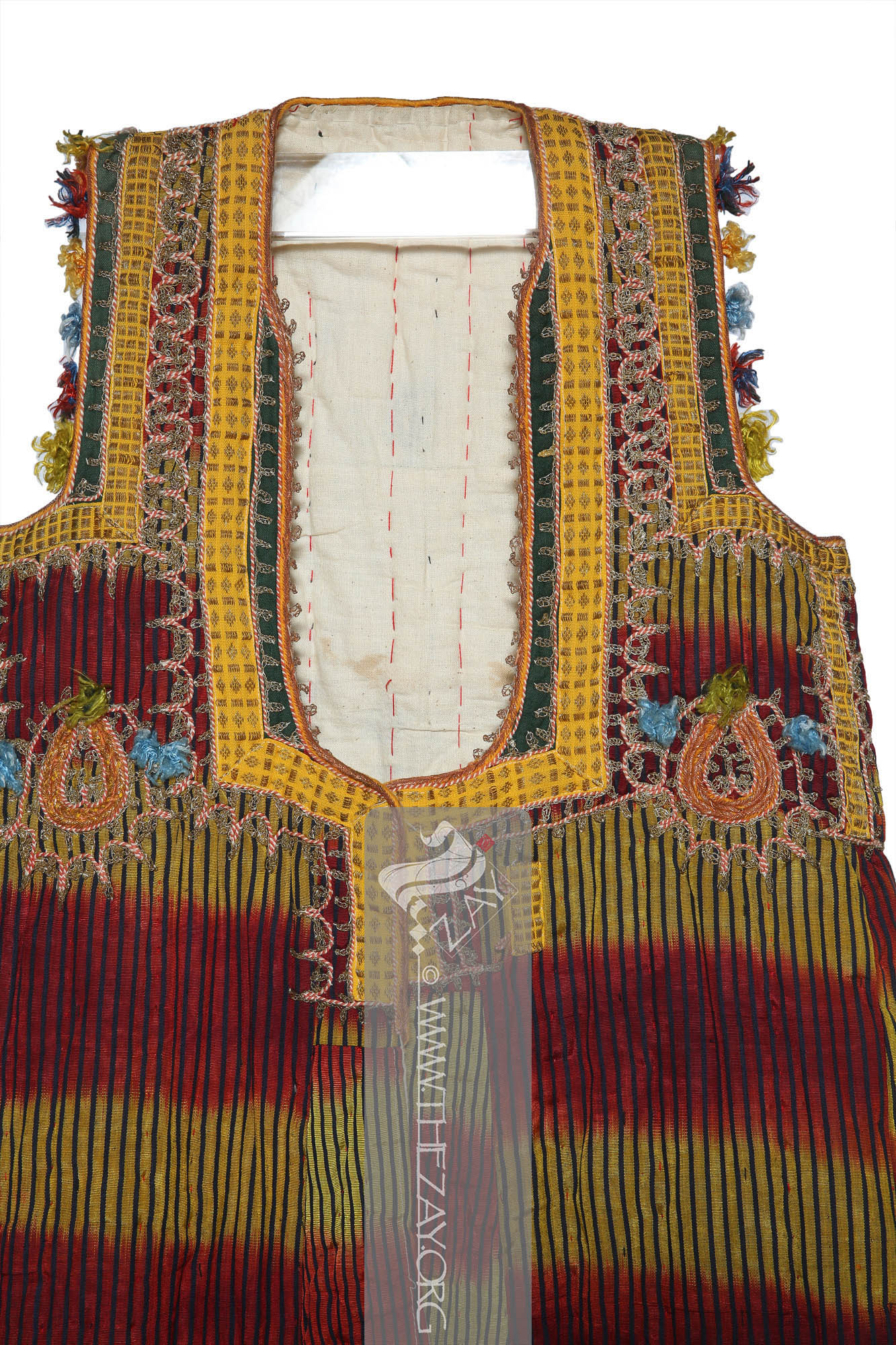
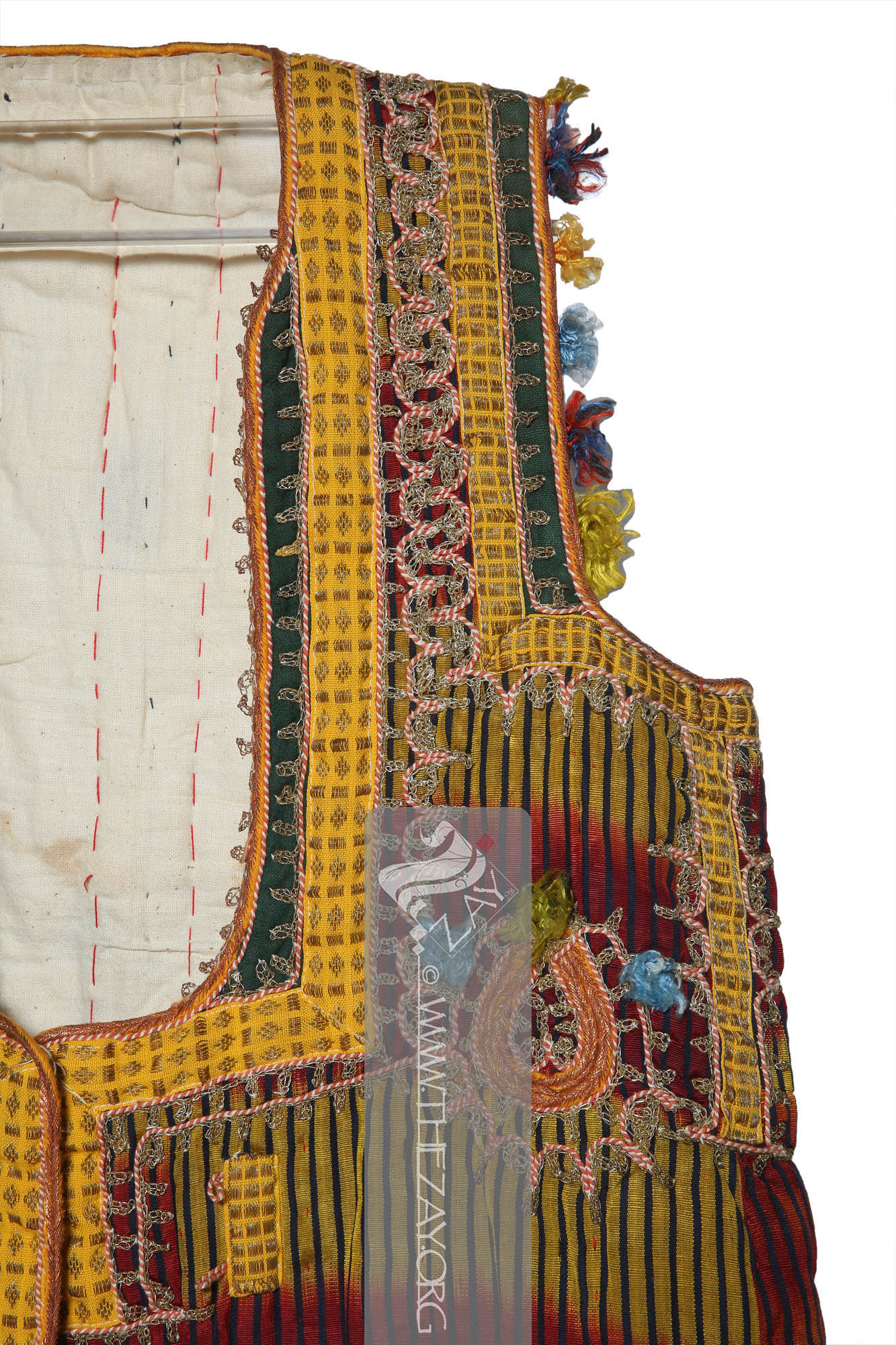
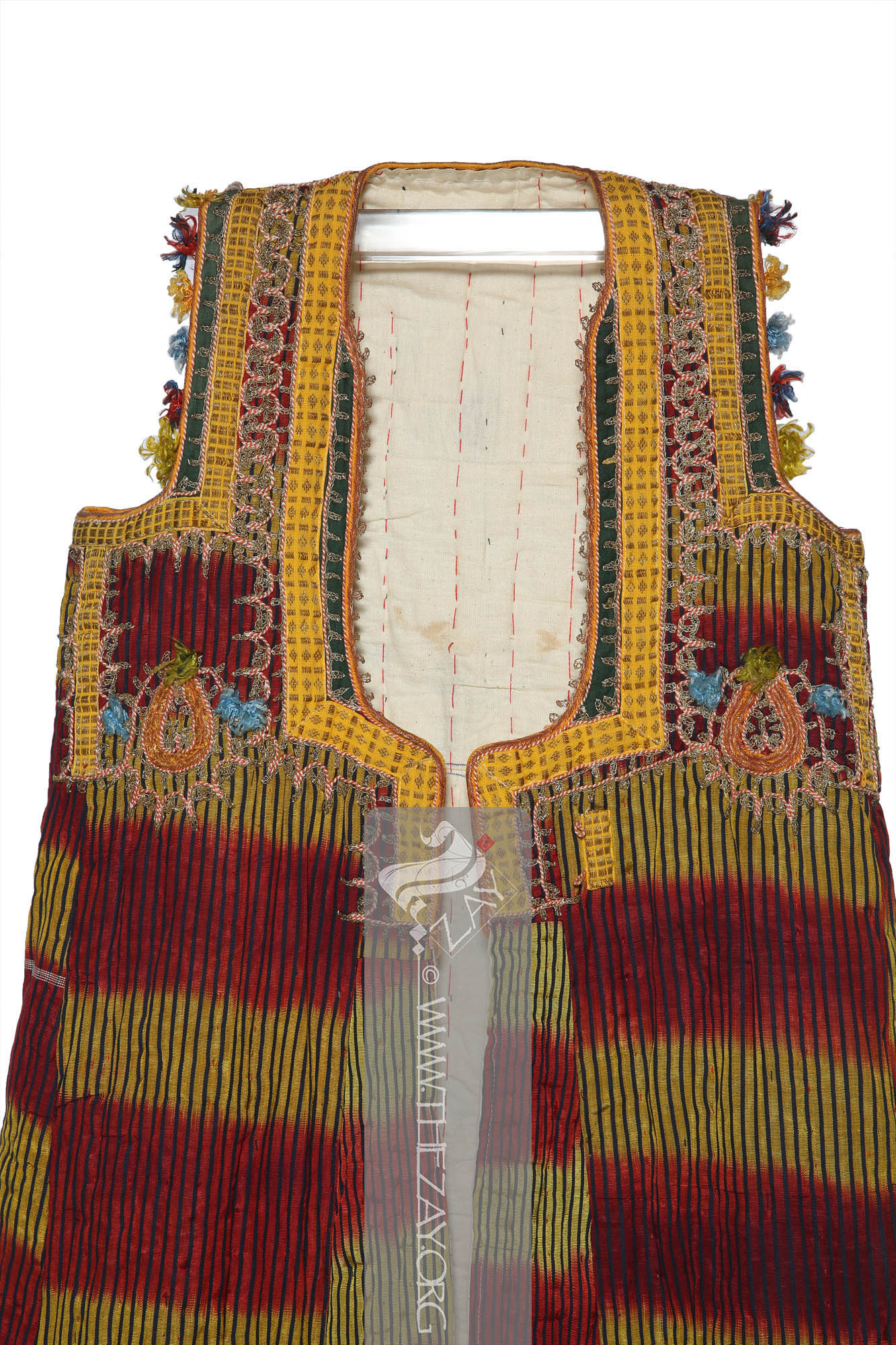
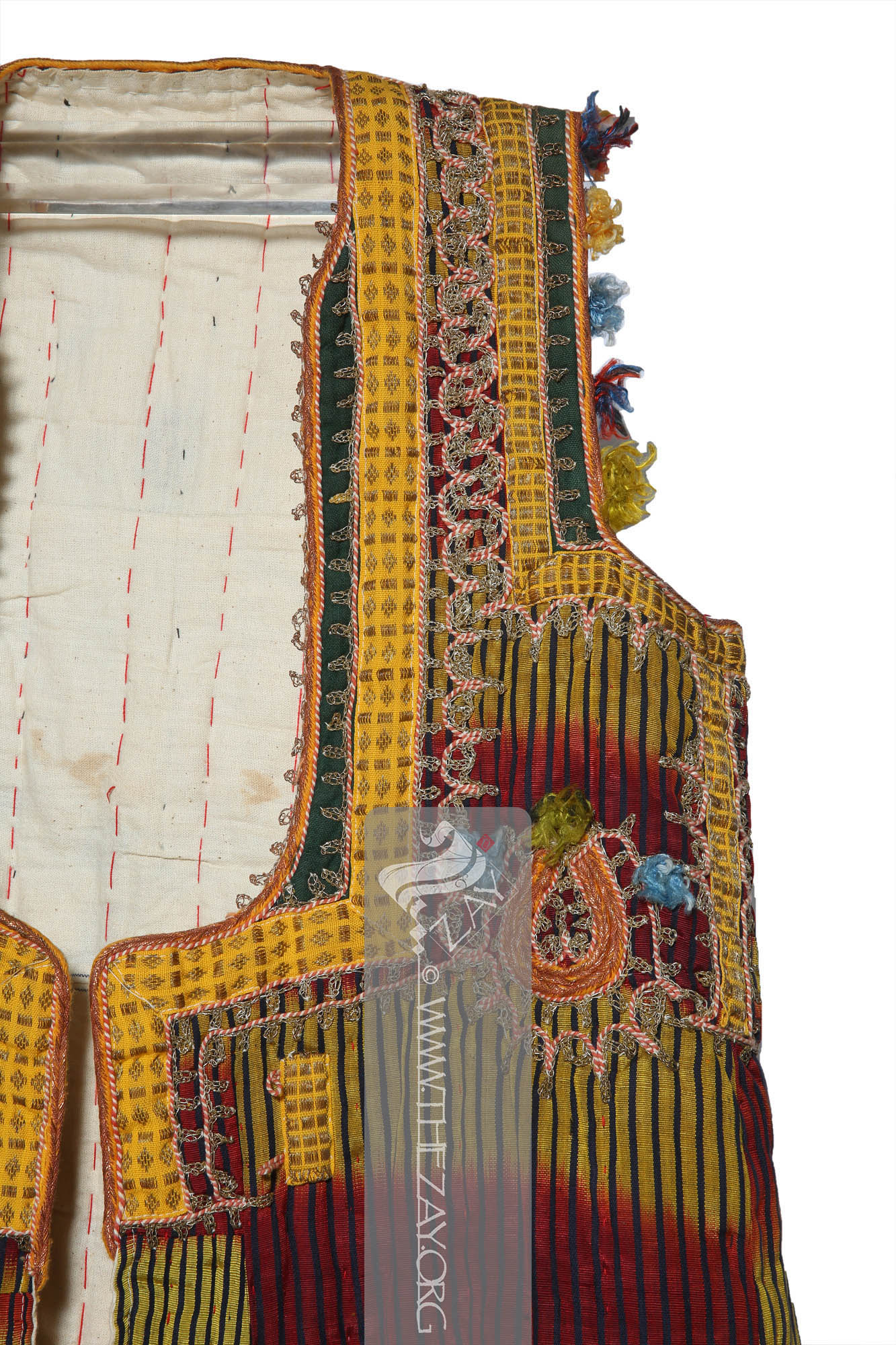
| Local Name | Yalak |
| Object Category | Overgarment |
| Gender | Female |
| Date of object | c. 1900s |
| Place Of orgin | Syria |
| Region | Aleppo |
| Object Range | Syria, Palestine, Lebanon, Jordan, Iraq, Türkiye et al |
| Dimensions | Length: 118 cm Width: 64 cm |
| Materials | Silk Cotton Metal |
| Technique | Hand Stitched Hand Embroidered |
| Color | |
| Motif | Geometric Floral |
| Provenance | Purchased, Linda Pastorino, USA 2019 |
| Location | The Zay Zay: (Arabic: costume, Pl. azyaā’), a set of clothes in a style typical of a particular country or historical period. Initiative |
| Status | In Storage |
| ZI number | ZI2019.500497 SYRIA |
Object History
This piece was purchased by Dr. Reem Tariq
Ṭariq: (Arabic; Synonym: tulle_bi_talli; talli; badla; khus_dozi ), series of small metal knots made on a woven net ground as embellishment. The term is commonly used in the Levant Arab region specifically in Lebanon. Ṭariq: (Arabic; Synonym: tulle_bi_talli; talli; badla; khus_dozi ), series of small metal knots made on a woven net ground as embellishment. The term is commonly used in the Levant Arab region specifically in Lebanon.
Object description
This is a front open, sleeveless possibly women’s jacket (yalak
Yalak: (Ottoman Turkic: yelek – a hip or waist length vest; from Old Anatolian: yélek – Vest), a short-sleeved waistcoat traditionally worn by men and a long outer robe or tight jacket either sleeveless or short sleeved with a tight bodice traditionally worn by women in the Ottoman controlled Levant.
The field of the yalak
Yalak: (Ottoman Turkic: yelek – a hip or waist length vest; from Old Anatolian: yélek – Vest), a short-sleeved waistcoat traditionally worn by men and a long outer robe or tight jacket either sleeveless or short sleeved with a tight bodice traditionally worn by women in the Ottoman controlled Levant.
A green patch flanked by orange and ivory corded cotton ribbon is adorned with metal thread possibly in silver. A repeat of a toothlike pattern is featured using a type of (chain_stitch
Chain_stitch: An embroidery technique where a looped stitch is made in a continuous chain-like pattern. Each stitch is formed by looping the thread through the previous stitch, creating a linked chain. ) style embroidery famous from Damascus (aghabani
Aghabānī: (Arabic), a type of embroidered fabric often either silk or cotton. The embroidery technique used to create the embellishment was needlepoint chain_stitch with Damascus and Aleppo as centre for such craftsmanship in the Levant.
The next tier comprises a series of scalloped orange and ivory corded ribbons. The space between the two scallops is filled with aghabani
Aghabānī: (Arabic), a type of embroidered fabric often either silk or cotton. The embroidery technique used to create the embellishment was needlepoint chain_stitch with Damascus and Aleppo as centre for such craftsmanship in the Levant.
Another patch of green cotton fabric flanked by cotton corded ribbons and embellished with embroidered patterns follows. The hem of the neckline is trimmed with a thin (herringbone_stitch
Herringbone_stitch: a decorative stitch that creates a V-shaped pattern, resembling fish bones. It's commonly used in embroidery, sewing, and quilting to join fabrics or for decorative detailing. The stitch is worked diagonally and often gives a clean, attractive finish.
Similar trimming is also seen along the shoulders, however, a series of silk floss Floss: (Old French: flosche – nap of velvet), is a type of silk fibre obtained from the cocoons of wild silkworms. It is characterized by its long, fluffy fibers that are not tightly woven, making it ideal for use in various textile applications such as embroidery, lace-making, and sewing. pompoms in various colours – orange, red, shades of blue, and shades yellow – are used as an additional adornment. A floral pattern with a central motif of an oval bordered with scallops adorn each side of the front opening near the bust.
This is embellished with herringbone_stitch
Herringbone_stitch: a decorative stitch that creates a V-shaped pattern, resembling fish bones. It's commonly used in embroidery, sewing, and quilting to join fabrics or for decorative detailing. The stitch is worked diagonally and often gives a clean, attractive finish. Aghabānī: (Arabic), a type of embroidered fabric often either silk or cotton. The embroidery technique used to create the embellishment was needlepoint chain_stitch with Damascus and Aleppo as centre for such craftsmanship in the Levant. Frog_fastener: (Synonym: Chinese frog closure, frog closure), is a decorative and functional type of button used to fasten clothing. Said to have originated between c. 5th to 7th century China these buttons consist of a cord or braid looped through a decorative knot. Yalak: (Ottoman Turkic: yelek – a hip or waist length vest; from Old Anatolian: yélek – Vest), a short-sleeved waistcoat traditionally worn by men and a long outer robe or tight jacket either sleeveless or short sleeved with a tight bodice traditionally worn by women in the Ottoman controlled Levant.
This yalak
Yalak: (Ottoman Turkic: yelek – a hip or waist length vest; from Old Anatolian: yélek – Vest), a short-sleeved waistcoat traditionally worn by men and a long outer robe or tight jacket either sleeveless or short sleeved with a tight bodice traditionally worn by women in the Ottoman controlled Levant. Yalak: (Ottoman Turkic: yelek – a hip or waist length vest; from Old Anatolian: yélek – Vest), a short-sleeved waistcoat traditionally worn by men and a long outer robe or tight jacket either sleeveless or short sleeved with a tight bodice traditionally worn by women in the Ottoman controlled Levant. Yalak: (Ottoman Turkic: yelek – a hip or waist length vest; from Old Anatolian: yélek – Vest), a short-sleeved waistcoat traditionally worn by men and a long outer robe or tight jacket either sleeveless or short sleeved with a tight bodice traditionally worn by women in the Ottoman controlled Levant.
While the aghabani
Aghabānī: (Arabic), a type of embroidered fabric often either silk or cotton. The embroidery technique used to create the embellishment was needlepoint chain_stitch with Damascus and Aleppo as centre for such craftsmanship in the Levant.
Links